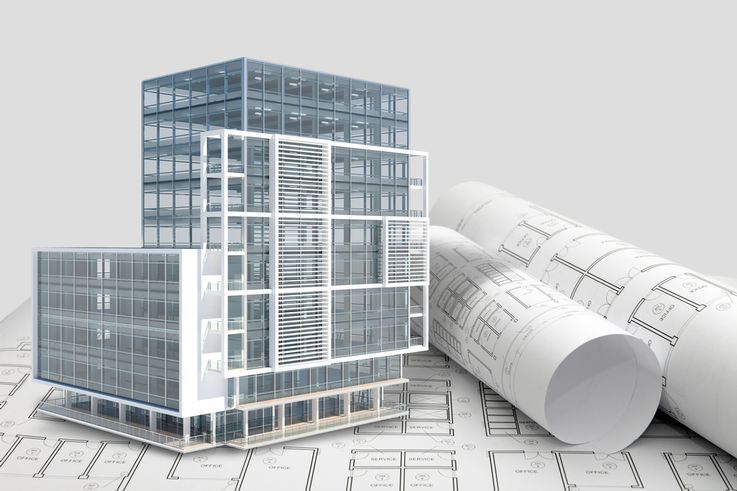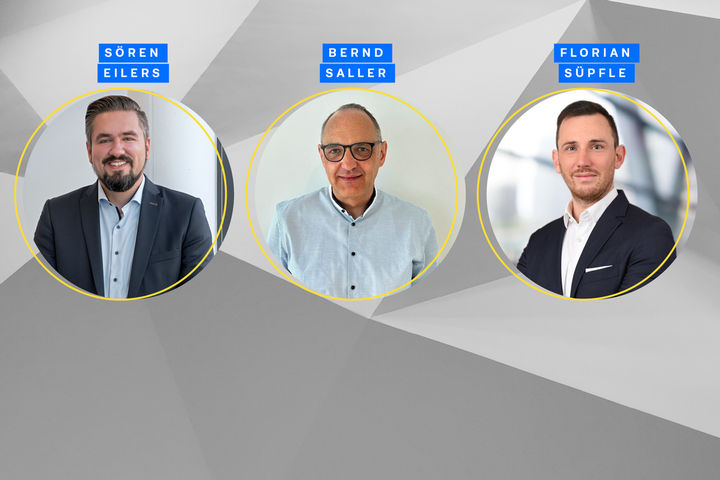Liveable buildings in a changing world
We discuss requirements and trends in modern construction with our GEZE experts Sören Eilers, Bernd Saller and Florian Süpfle. What has changed in recent years in the construction industry and with respect to the concept of liveable buildings?
Is construction different today than it was in the past?
Florian Süpfle: Construction has changed significantly in recent decades. In the post-war period, the main focus was on rebuilding. Back then, buildings were constructed quickly, in some cases with low-quality materials and without much planning. And today? Safety, sustainability, and energy efficiency are the priorities.
What challenges do these priorities pose?
Florian Süpfle: Building planning has become more complex due to considerations surrounding accessibility and energy efficiency. There are also regulations to consider, such as for fire protection. To reconcile all of these issues, planners have to collaborate with experts from many different areas.
Learn more about planning multifunctional doors
Sören Eilers: Nevertheless, we are still constructing buildings – and public building is even increasing. Buildings are constructed “for a specific purpose”, and the current legal situation has to be taken into consideration. The role buildings play in protecting the climate and environment is another focus. This is both a challenge and an opportunity for planners.

With BIM, complex construction projects become more cost-effective and efficient.
What new technologies are changing the planning process?
Bernd Saller: Of course, a software programme, which could be used to handle feasibility and plausibility checks as well as review standards, would simplify ensuring compliance with regulations.
Florian Süpfle: Exactly, digitisation makes it easier for us to carry out construction projects. Building data is collected digitally via Building Information Modeling (BIM). This allows all trades to exchange information more easily. Or virtual reality: planners and customers experience buildings virtually and can make changes in real time.
Building data is collected digitally via Building Information Modeling (BIM). This allows all trades to exchange information more easily.
Florian Süpfle, Specification Sales Manager at GEZE
Thanks to the GEZE Wireless Kit, ceiling detectors and manual release buttons in GEZE hold-open systems can be connected wirelessly to the fall detector. © Annika Feuss / GEZE GmbH
Sören Eilers: The current use is also becoming more important. Less office space is needed, for example, due to remote working.
Florian Süpfle: That’s true. There are frequently usage units with different tenants in a single office building. Laying out escape and rescue routes can be a planning challenge because of the different rental units. However, conversions of existing buildings offer great potential for GEZE.
Sören Eilers: We shouldn't forget sustainable building. The demand for windows or doors with a low U value is increasing. People are also more interested in maximising energy efficiency in their construction products.
Florian Süpfle: Today, there are many materials that are more sustainable, lighter and, in some cases, more affordable. In the past, doors and windows mainly used to be made out of wood. Today, plastic, aluminium, wood, and glass, or a combination of those materials, are used.
Bernd Saller: There is also the aspect of pricing. The design is of secondary importance nowadays.
Sören Eilers: Nevertheless, the trend is clearly moving towards glass surfaces and open buildings – and towards building networking.
We shouldn't forget sustainable building. The demand for windows or doors with a low U value is increasing. People are also more interested in maximising energy efficiency in their construction. Nevertheless, the trend is clearly moving towards glass surfaces and open buildings – and towards building networking.
Sören Eilers, Specification Sales Manager at GEZE


